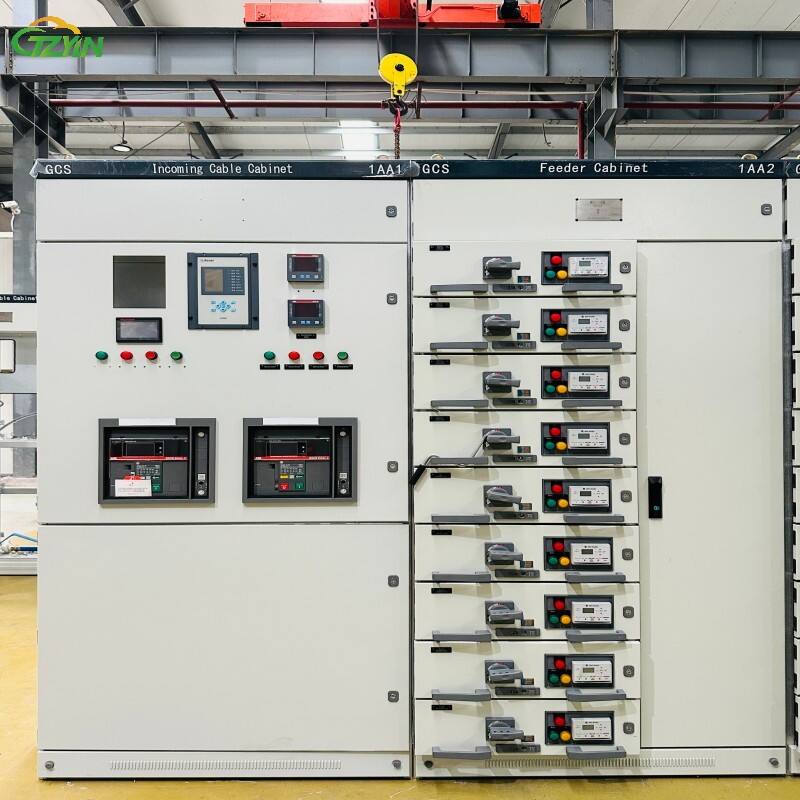Understanding Modern Power Distribution Safety Systems
The evolution of electrical distribution systems has brought tremendous advances in safety and reliability. At the forefront of these innovations, drawer-type distribution cabinets represent a significant leap forward in power management technology. These sophisticated systems offer unprecedented capabilities in fault isolation while maintaining continuous power supply through the main bus.
Modern industrial facilities and critical infrastructure demand uninterrupted power supply, making the ability to isolate faults without complete system shutdown essential. Drawer-type distribution cabinets have emerged as a revolutionary solution, combining advanced protection mechanisms with practical serviceability features that transform how we manage electrical distribution systems.
Core Components and Operating Principles
Innovative Design Features
The drawer-type distribution cabinet incorporates several key design elements that enable its fault isolation capabilities. The withdrawable drawer mechanism houses circuit breakers and protection devices, allowing for quick isolation of specific circuits. This modular design includes safety interlocks, position indicators, and robust insulation barriers between compartments.
Advanced busbar systems within the cabinet feature compartmentalization that prevents fault propagation. The main bus remains energized while individual drawer units can be safely withdrawn, thanks to sophisticated isolation mechanisms and arc-containment features.
Protection Mechanisms
Multiple layers of protection work in harmony within a drawer-type distribution cabinet. Electronic trip units provide precise fault detection, while mechanical interlocks prevent operational errors. The cabinet's design includes arc-resistant construction and pressure relief systems to manage potential fault conditions safely.
Real-time monitoring systems continuously assess electrical parameters, enabling early detection of potential issues before they escalate into major faults. This predictive capability helps maintain system reliability while ensuring personnel safety.
Fault Isolation Capabilities
Selective Coordination
Drawer-type distribution cabinets excel in implementing selective coordination strategies. When a fault occurs, the system can isolate the affected circuit while maintaining power to unaffected areas. This selective isolation capability is achieved through sophisticated coordination between protection devices and the physical compartmentalization of the cabinet.
The cabinet's design allows for rapid isolation of faulted sections without compromising the integrity of the main bus system. This feature is particularly crucial in critical applications where continuous power supply must be maintained to essential equipment.
Maintenance Benefits
The ability to perform maintenance on individual circuits without disrupting the entire system represents a significant advantage of drawer-type distribution cabinets. Technicians can safely withdraw drawer units for inspection, testing, or replacement while the main bus continues to operate, dramatically reducing system downtime.
Regular maintenance procedures become more efficient and safer, as work can be conducted on isolated sections without exposing personnel to live parts. This feature also enables proactive maintenance schedules that help prevent potential faults before they occur.
Safety and Reliability Considerations
Personnel Protection
Safety features in drawer-type distribution cabinets extend beyond basic electrical protection. The design incorporates multiple mechanical and electrical interlocks that prevent access to energized components. Position indicators clearly show the status of each drawer unit, reducing the risk of operational errors.
Advanced earthing systems ensure that withdrawn units are properly grounded before handling, while shutters automatically cover live contacts when drawers are removed. These features create a comprehensive safety system that protects both equipment and personnel.
System Reliability
The robust construction and sophisticated protection schemes of drawer-type distribution cabinets contribute to enhanced system reliability. The ability to isolate faults quickly minimizes the impact of electrical disturbances on the overall system. Regular testing and maintenance can be performed without compromising system availability.
Modern drawer-type distribution cabinets often include condition monitoring capabilities that help identify potential issues before they lead to failures. This predictive approach to maintenance significantly improves long-term reliability and reduces unexpected downtime.
Implementation and Best Practices
Installation Requirements
Successful implementation of drawer-type distribution cabinets requires careful attention to installation details. Proper alignment, grounding, and connection of power cables are essential for optimal performance. The installation area must provide adequate clearance for drawer withdrawal and ventilation to maintain proper operating temperatures.
Environmental considerations such as humidity control and protection from dust are crucial for ensuring reliable operation. Regular inspection of seals, gaskets, and ventilation systems helps maintain the cabinet's protective features.
Operational Guidelines
Clear operational procedures must be established and followed to maximize the benefits of drawer-type distribution cabinets. Staff training should cover normal operation, emergency procedures, and maintenance protocols. Documentation of all operational activities helps maintain system integrity and troubleshoot any issues that arise.
Regular testing of protection systems and mechanical interlocks ensures continued reliable operation. Establishing a comprehensive maintenance schedule that includes both preventive and predictive measures helps optimize system performance.
Frequently Asked Questions
How does a drawer-type distribution cabinet maintain power continuity during fault isolation?
The cabinet's compartmentalized design and sophisticated protection systems allow for isolation of faulted circuits while maintaining power flow through the main bus. This is achieved through a combination of selective coordination, physical separation of components, and advanced protection mechanisms.
What maintenance can be performed while the main bus remains energized?
With proper safety protocols in place, technicians can perform inspection, testing, and replacement of circuit breakers and protection devices in withdrawn drawer units. The cabinet's design ensures these activities can be conducted safely while the main bus continues to operate.
Are there specific safety certifications required for drawer-type distribution cabinets?
Drawer-type distribution cabinets must comply with relevant electrical safety standards and certifications, including IEC 61439 for low-voltage switchgear and controlgear assemblies. Additional certifications may be required based on specific application requirements and local regulations.
How often should safety features be tested in drawer-type distribution cabinets?
Regular testing of safety features, including mechanical interlocks, protection devices, and monitoring systems, should be performed at least annually or according to manufacturer recommendations. More frequent testing may be required in critical applications or harsh environments.
Table of Contents
- Understanding Modern Power Distribution Safety Systems
- Core Components and Operating Principles
- Fault Isolation Capabilities
- Safety and Reliability Considerations
- Implementation and Best Practices
-
Frequently Asked Questions
- How does a drawer-type distribution cabinet maintain power continuity during fault isolation?
- What maintenance can be performed while the main bus remains energized?
- Are there specific safety certifications required for drawer-type distribution cabinets?
- How often should safety features be tested in drawer-type distribution cabinets?


